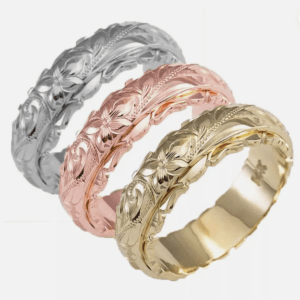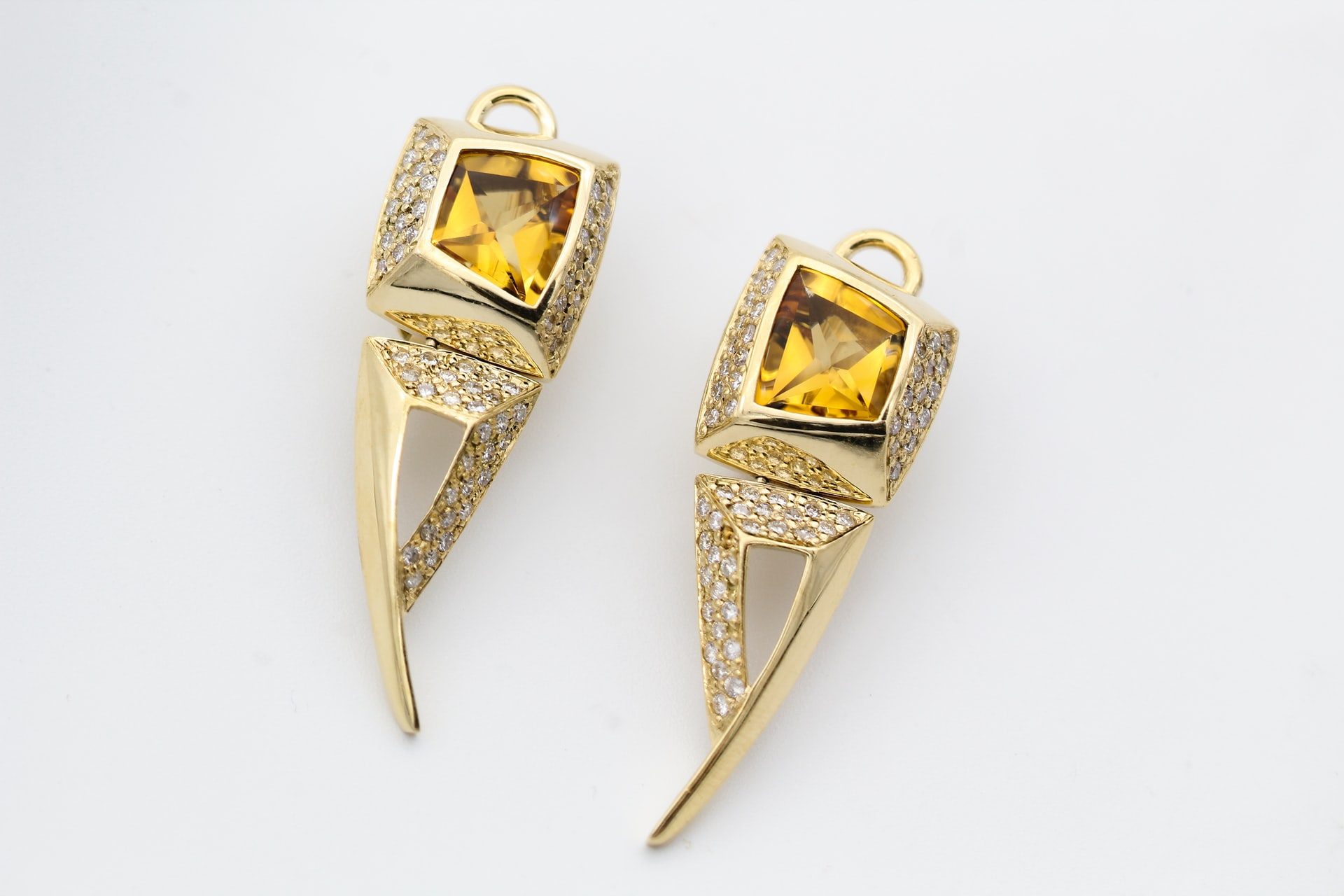When you hear the word gold, chances are you picture the vibrant yellow hue of ancient treasures, shimmering coins or bullion bars. But not all gold looks the same – especially in the world of jewelry! From classic yellow to trendy rose and even green, gold’s versatility comes from the other metals that it’s mixed with. But what makes gold alloys different, and is one type more valuable than another?
What is a Gold Alloy?
An alloy is a blend of two or more metals, designed to enhance desirable properties in the final product. Gold, in its pure form, is too soft for everyday use, so it’s typically alloyed to make it more durable. If you wore a wedding ring that was 99.9% gold, it could easily bend out of shape from something as simple as carrying a heavy bag!
Around 2500 BC, early civilizations discovered that mixing gold with other metals (like copper, nickel, silver, zinc, etc) made it stronger. A side effect of this process resulted in a change of color, giving us varieties like rose and yellow gold.
While fashion trends may shift, all gold alloys are primarily valued by their karat rating, which refers to the amount of pure gold in the piece. For example, 24k gold is 99.95% pure, while 18k gold contains 75% gold. The specific alloy metals – such as copper, silver, nickel or iron – determine the final color.

Yellow Gold vs Rose Gold
Yellow gold presents a warm yellow hue, made of pure gold alloyed with copper, silver and occasionally zinc. It’s a classic choice for jewelry with a timeless appeal. Yellow gold has been used in jewelry for millennia, from the riches of ancient Egypt to today’s luxury pieces.
Rose gold is made of pure gold alloyed with copper. Sometimes a small amount of silver is also added to adjust the shade of pink. The copper is what creates the rose color – the more copper, the pinker the alloy. Rose gold has gained popularity in recent years and is often used in engagement rings, wedding bands, bracelets and watches. Rose gold dates back to 19th-century Russia, which is why it’s sometimes referred to as ‘Russian gold.’
Durability is a key difference between yellow and rose gold. Rose gold, with its higher copper content, tends to be more robust than yellow gold, making it a great choice for everyday wear.
Which Gold Alloy is Worth More?
Now for the big question: which gold alloy is worth more?
The answer lies in the composition of each alloy. Yellow gold typically contains a combination of gold, copper, silver, and sometimes zinc, while rose gold is a mix of gold, copper, and occasionally silver. Since copper and zinc are much less valuable than silver, a 14k yellow gold piece might be worth slightly more than a 14k rose gold item of the same weight—assuming the yellow gold contains a higher percentage of silver.
Here are the approximate spot prices as of September 2024:
- Gold: $2,500 per ounce
- Silver: $29 per ounce
- Copper: $0.28 per ounce
- Zinc: $0.076 per ounce
However, the difference in value between yellow and rose gold alloys is trivial, as gold makes up the majority of the value in each. What truly determines value is the karat rating – the amount of pure gold in the alloy.
Karat Ratings and Purity
Both yellow and rose gold can be found in varying karat ratings. Rose gold is commonly available in 14k and 18k, while yellow gold tends to have a broader range, including 10k, 14k, 18k, and even 22k. As the karat rating increases, so does the percentage of pure gold, making the piece more valuable.
Learn More About Your Gold Jewelry
Curious about how much gold your jewelry contains? You can start by looking for karat ratings and production hallmarks to provide insights. We actually have an entire guest blog on this topic – check it out to learn more!
Looking to Refine Your Jewelry?
If you want to sell your precious metal jewelry, start your shipment with Garfield today! With over a century of experience, we’re experts in refining jewelry and recovering maximum yields of precious metals. We proudly provide industry-leading payouts and award-winning customer service!
Garfield Refining buys all used gold, gold-filled, platinum, and silver jewelry for the fair market value of precious metal content only. We don’t appraise jewelry for its artistry, brand, or vintage.

